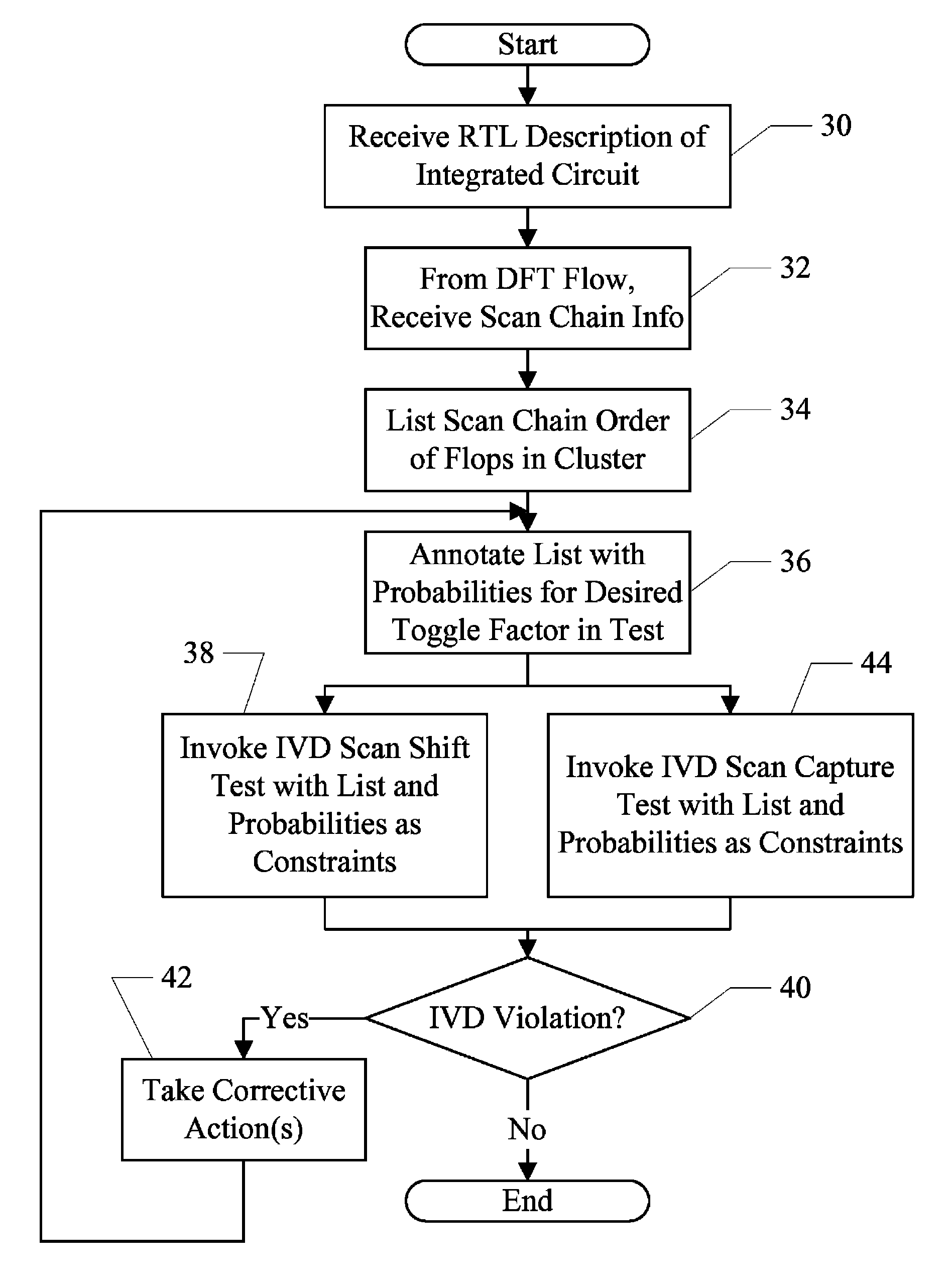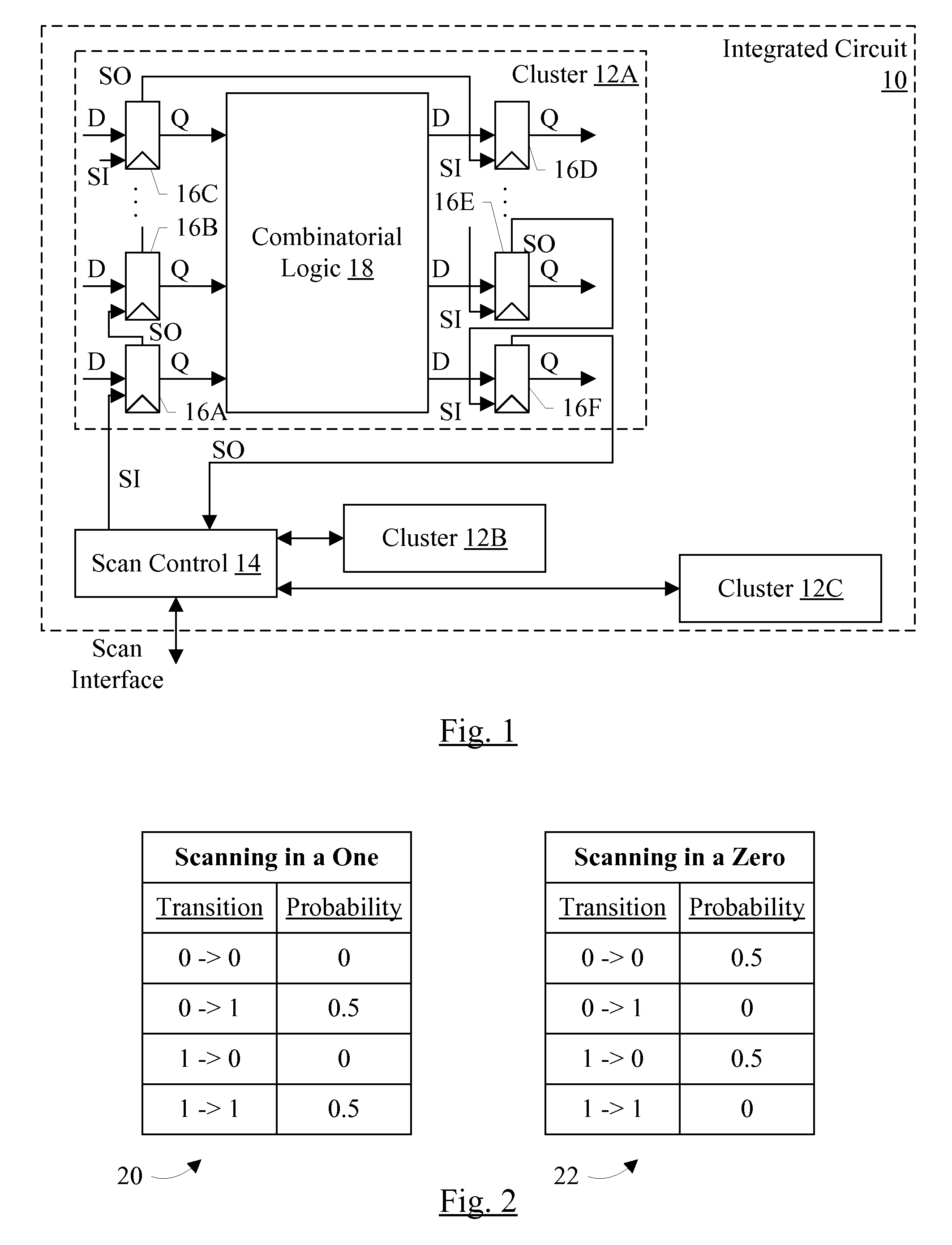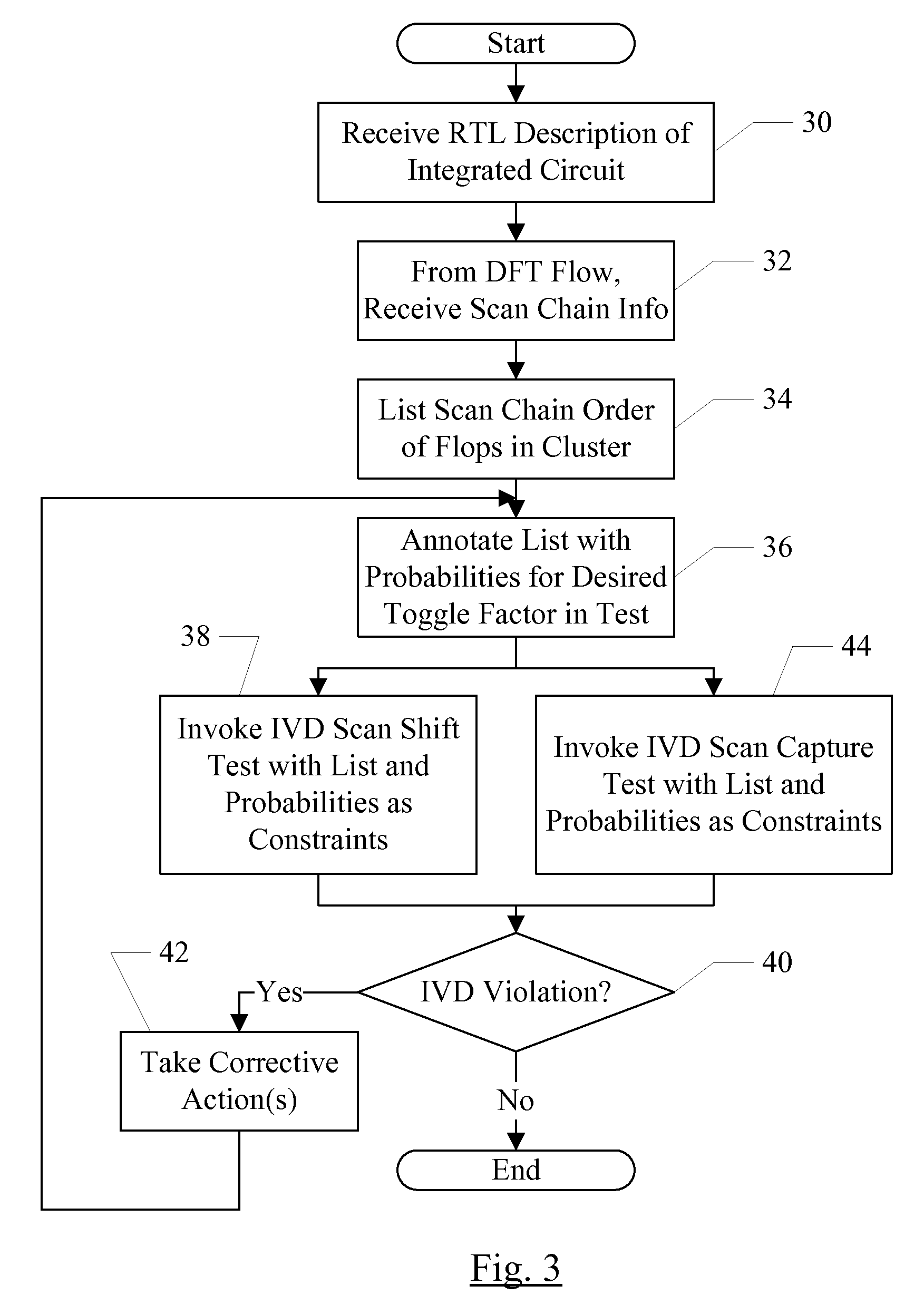Vectorless IVD analysis prior to tapeout to prevent scan test failure due to voltage drop
a scan test and analysis method technology, applied in error detection/correction, program control, instruments, etc., can solve problems such as increasing the likelihood of transistors, increasing the integrity of power supplies, and increasing the possibility of power supply drooping, so as to improve the testability of integrated circuits and avoid long test vector generation processes. , the effect of avoiding the associated delay
- Summary
- Abstract
- Description
- Claims
- Application Information
AI Technical Summary
Benefits of technology
Problems solved by technology
Method used
Image
Examples
Embodiment Construction
[0021]Turning now to FIG. 1, a block diagram of one embodiment of an integrated circuit 10 is shown. In the illustrated embodiment, the integrated circuit 10 includes multiple circuit clusters 12A-12C coupled to a scan control circuit 14. The scan control circuit 14 is coupled to an external scan interface. The scan interface may be compatible with an industry standard interface such as the test access port (TAP) described in the Institute of Electrical and Electronic Engineers (IEEE) specification 1149.1 and / or 1500, or may be an interface defined by the designers of the integrated circuit 10. Each cluster 12A-12C may include one or more scan chains, beginning with a scan in signal (SI) from the scan control circuit 14 to the cluster 12A-12C and ending with a scan out (SO) signal from the cluster 12A-12C to the scan control circuit 14. For example, one scan chain for the cluster 12A is shown in FIG. 1, although a given cluster may have multiple scan chains.
[0022]Generally, a cluste...
PUM
 Login to View More
Login to View More Abstract
Description
Claims
Application Information
 Login to View More
Login to View More - R&D
- Intellectual Property
- Life Sciences
- Materials
- Tech Scout
- Unparalleled Data Quality
- Higher Quality Content
- 60% Fewer Hallucinations
Browse by: Latest US Patents, China's latest patents, Technical Efficacy Thesaurus, Application Domain, Technology Topic, Popular Technical Reports.
© 2025 PatSnap. All rights reserved.Legal|Privacy policy|Modern Slavery Act Transparency Statement|Sitemap|About US| Contact US: help@patsnap.com



